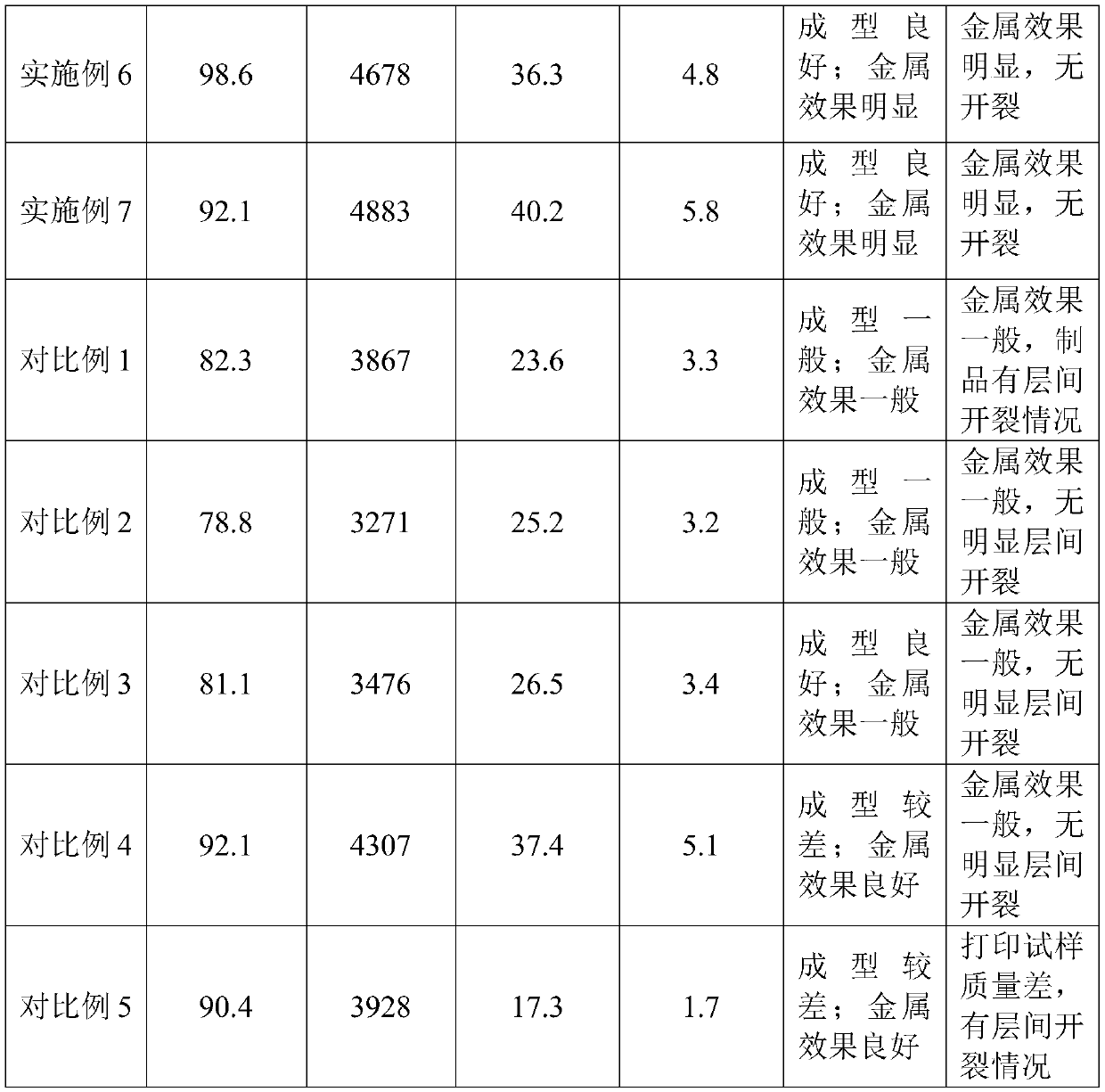A preparation method of modified polylactic acid material with metal effect for 3D printing
A polylactic acid material and 3D printing technology, applied in the direction of additive processing, etc., can solve the problems of polylactic acid consumables such as brittleness, excessive embrittlement, and easy cracking, and achieve low heat resistance temperature, ensure molding stability, and good toughness.
- Summary
- Abstract
- Description
- Claims
- Application Information
AI Technical Summary
Problems solved by technology
Method used
Image
Examples
Embodiment 1
[0042] This embodiment provides a method for preparing a modified polylactic acid material for 3D printing with a metallic effect, comprising the following steps:
[0043] Prepare the following preparation raw materials in parts by weight: 100 parts of polylactic acid, 100 parts of metal powder, 2 parts of metal pigment, 10 parts of toughening agent, 0.5 part of coupling agent, 0.5 part of lubricant, 0.3 part of hindered phenolic antioxidant, sub 0.2 part of phosphate antioxidant; the polylactic acid selects the 4032D grade of natureworks company (the polylactic acid can be applied to the present invention as long as it is a polylactic acid grade that can adapt to extrusion), and the metal powder is a 500-mesh particle shape copper powder, the metal pigment is 500 mesh scale copper powder, the toughening agent is methyl methacrylate-butadiene-styrene core-shell copolymer, the coupling agent γ-(2,3 - glycidyloxy) propyltrimethoxysilane, the lubricant is ethylene bis stearic aci...
Embodiment 2
[0050] This embodiment provides a method for preparing a modified polylactic acid material for 3D printing with a metallic effect, comprising the following steps:
[0051] Prepare the following preparation raw materials in parts by weight: 100 parts of polylactic acid, 120 parts of metal powder, 3 parts of metal pigment, 10 parts of toughening agent, 0.8 part of coupling agent, 0.5 part of lubricant, 0.3 part of hindered phenolic antioxidant, sub 0.2 part of phosphate antioxidant; The polylactic acid selects the 4043D brand of natureworks company, the metal powder is 400 mesh granular bronze powder, the metal pigment is 500 mesh scaly bronze powder, and the toughening agent is Methyl methacrylate-butyl acrylate core-shell copolymer, the coupling agent is tetraoctyl titanium [two (dilauryl phosphite)], the lubricant is pentaerythritol stearate, the The hindered phenolic antioxidant is tetrakis[β-(3,5-di-tert-butyl-4-hydroxyphenyl) propionate] pentaerythritol ester, and the phos...
Embodiment 3
[0058] This embodiment provides a method for preparing a modified polylactic acid material for 3D printing with a metallic effect, comprising the following steps:
[0059] Prepare the following raw materials in parts by weight: 100 parts of polylactic acid, 80 parts of metal powder, 5 parts of metal pigment, 8 parts of toughening agent, 2 parts of coupling agent, 1.5 parts of lubricant, 0.2 part of hindered phenolic antioxidant, sulfur 0.4 parts of ester antioxidants; the polylactic acid selects REVODE190 from Zhejiang Hisun Biomaterials Co., Ltd., the metal powder is 800 mesh granular aluminum powder, and the metal pigment is 600 mesh scaly aluminum silver powder. The toughening agent is a silicone-modified methyl methacrylate-butyl acrylate core-shell copolymer, the coupling agent is three (dioctyl pyrophosphoryloxy) isopropyl titanate, and the lubricant It is a polyester hyperbranched resin, the hindered phenolic antioxidant is 4,6-three (3,5-di-tert-butyl-4-hydroxybenzyl) ...
PUM
 Login to View More
Login to View More Abstract
Description
Claims
Application Information
 Login to View More
Login to View More - R&D
- Intellectual Property
- Life Sciences
- Materials
- Tech Scout
- Unparalleled Data Quality
- Higher Quality Content
- 60% Fewer Hallucinations
Browse by: Latest US Patents, China's latest patents, Technical Efficacy Thesaurus, Application Domain, Technology Topic, Popular Technical Reports.
© 2025 PatSnap. All rights reserved.Legal|Privacy policy|Modern Slavery Act Transparency Statement|Sitemap|About US| Contact US: help@patsnap.com


